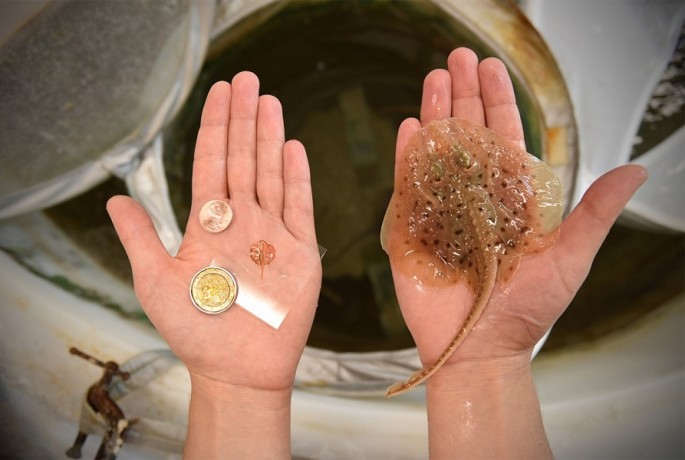For the first time ever, scientists have created a cyborg stingray with a heart that is made from rat heart cells. This robot is also tiny, about the size of a toenail, where it is controlled with light pulses and can glide and swim smoothly across water. This breakthrough invention can also become a crucial step in developing artificial hearts for humans.
According to lead author of the study, Kit Parker from the Wyss Institute at Harvard University, this robotic stingray can propel itself through water while its heart can also propel blood through its circulatory system.
Parker adds that this artificial heart is composed of living muscle cells that can closely mimic a natural, beating heart where it can also change as it grows.
Artificial hearts are crucial for saving human lives in the event that a heart transplant needs more time to replace the heart and if transplantation is not available at the time, saving three fourths of patients who are waiting for transplants.
Past versions of artificial hearts appear to be like mechanical pumps but with the new technological development of this robotic stingray, better designs for artificial hearts are within reach. Parker explains that this project aims to obtain better insight and understanding of the human heart and heart diseases using reverse engineering within the form of muscular pumps seen in and inspired by nature.
Researchers revealed that they began to build the robotic soft tissue when they developed a gold skeleton overlaid within a thin, flexible layer of polymer. Scientists then placed heart muscle cells taken from rat embryos on the top layer of the robot. Cells were genetically altered for the cyborg creature to follow a light source.
Upon first contact with light, the muscle cells inside the fins of the stingray will contract in a downward movement and as these cells relax, the gold skeleton will push these fins up as the skeleton stores the energy from the downward movement. This ultimately creates the swimming motion of the stingray that is guided using a two blue lights.
This optical stimulation can induce this muscle activation in sequences, with the help of serpentine patterned muscle circuitry, which leads to coordinated swimming, according to researchers. The robot is controlled by this modulating light frequency, by eliciting right and left fins, that also controls its speed and direction, which helps the biohybrid mechanism to maneuver within a course.
This new study is published in the journal Science.



























